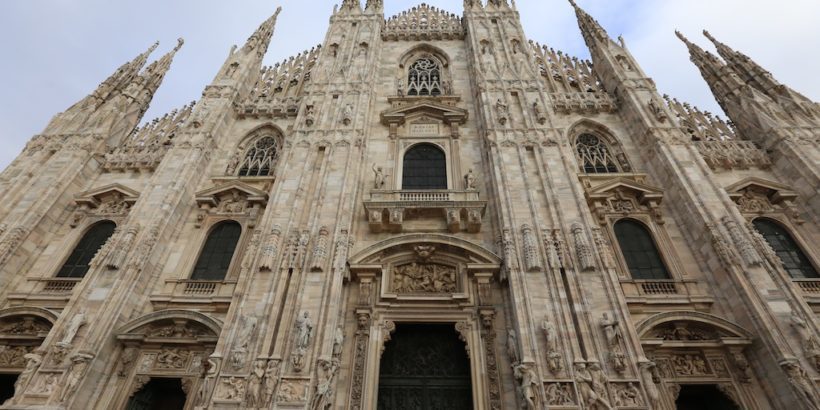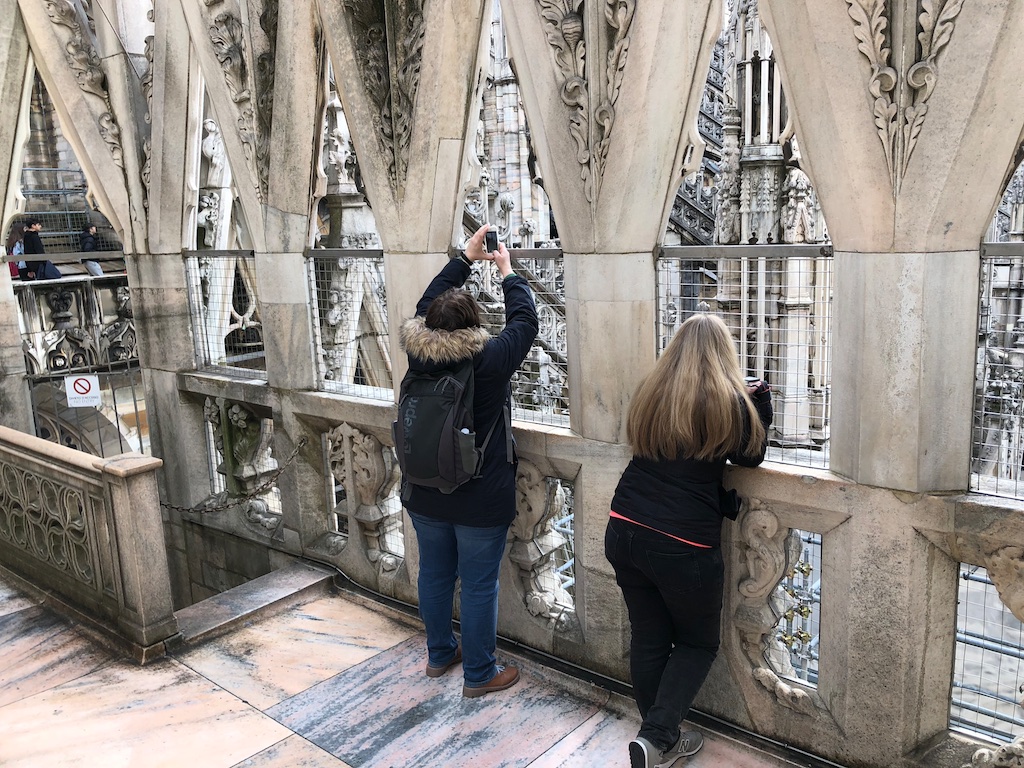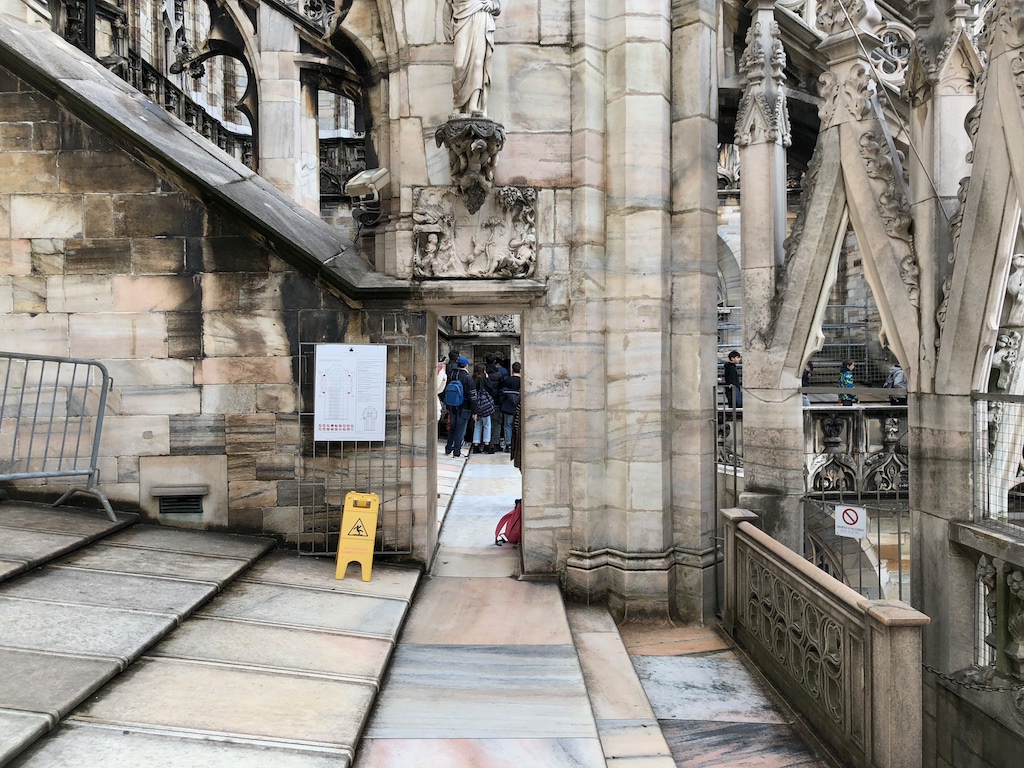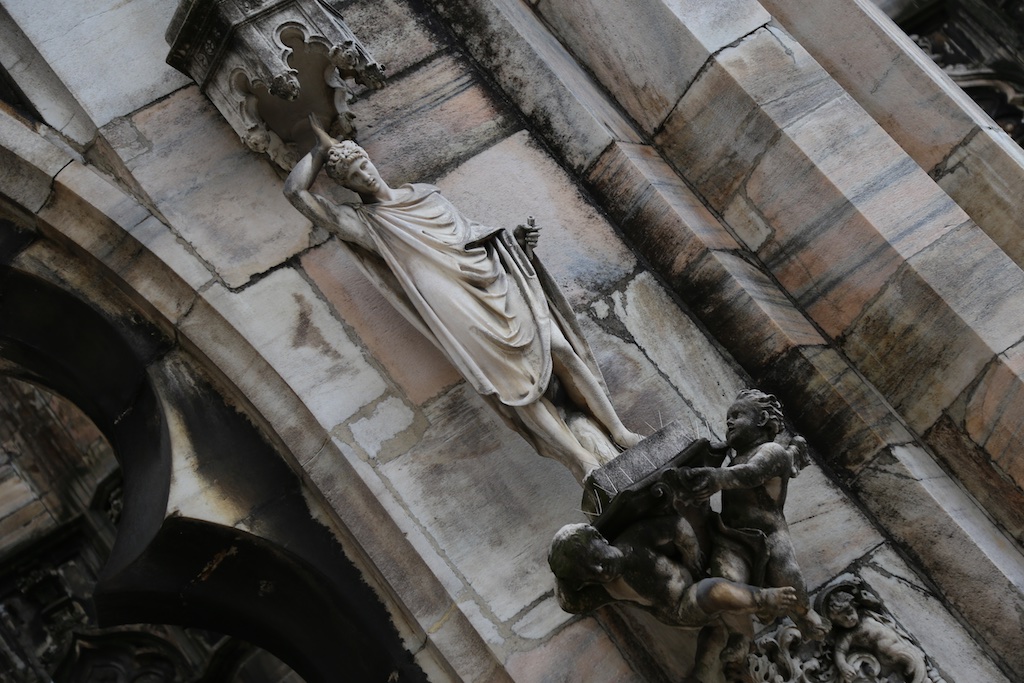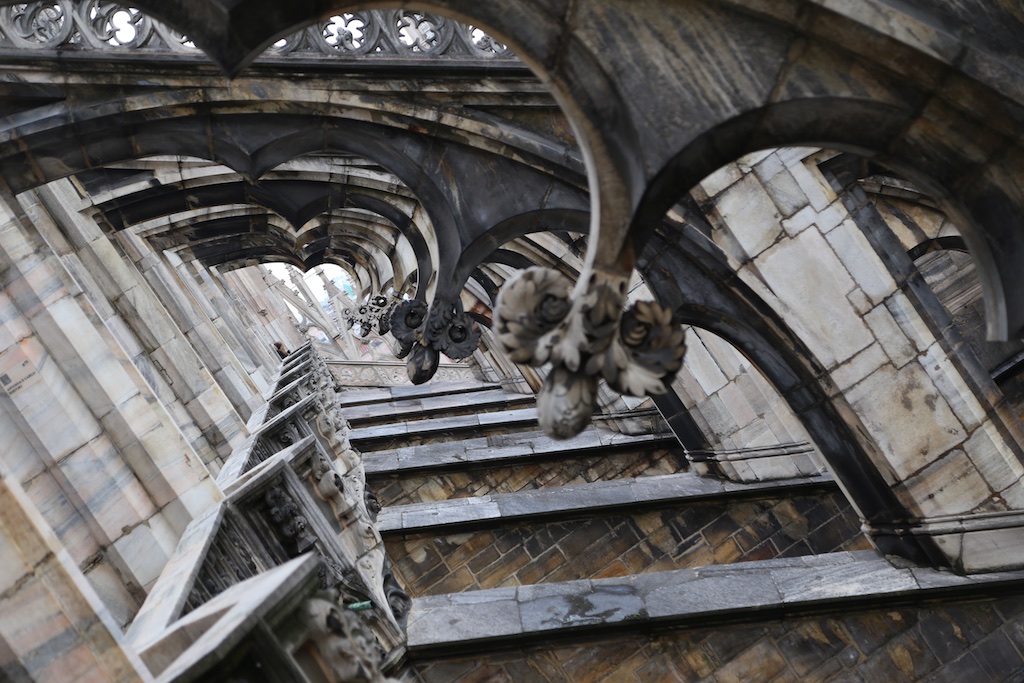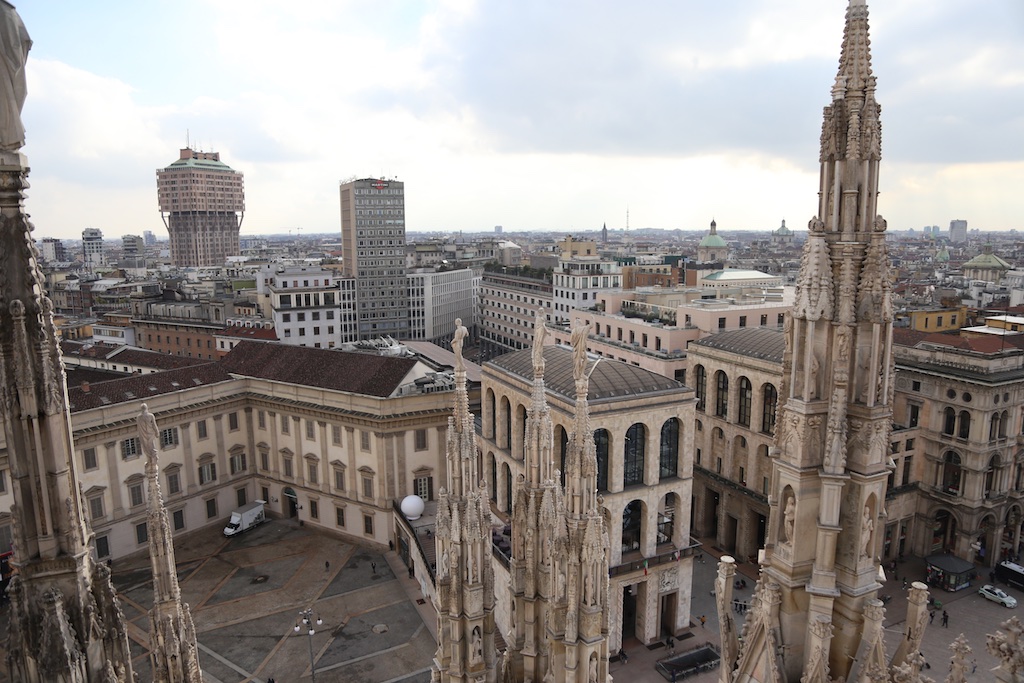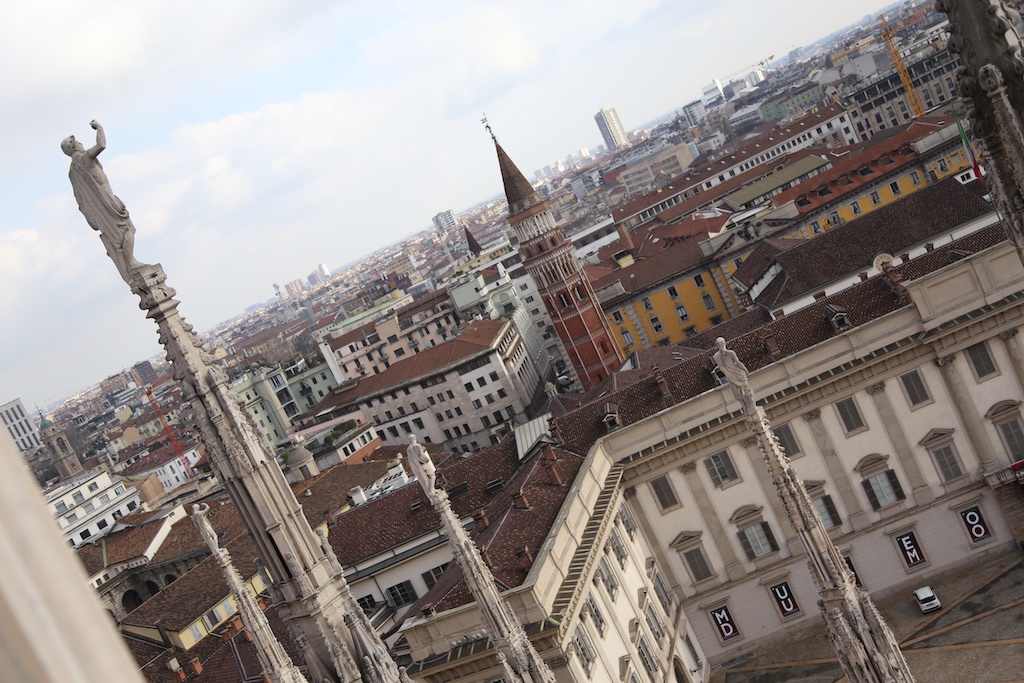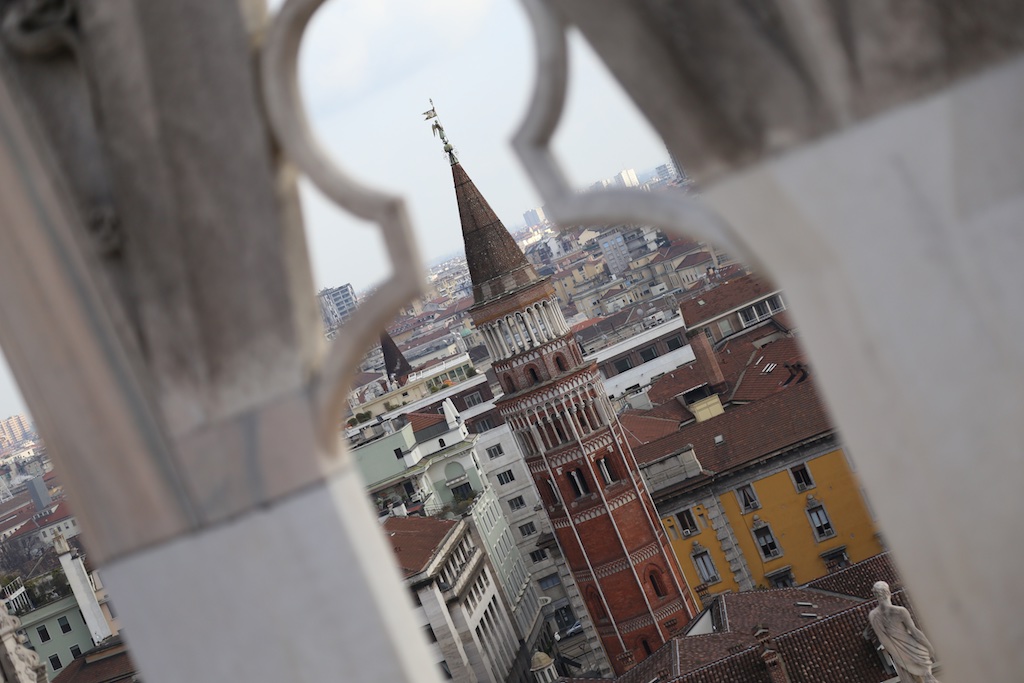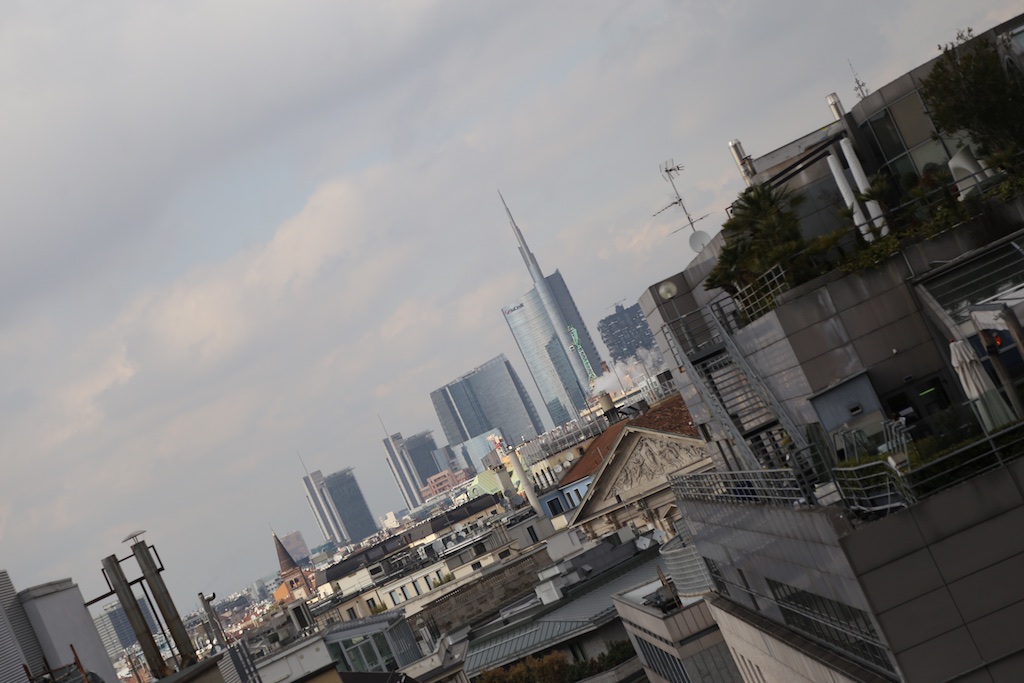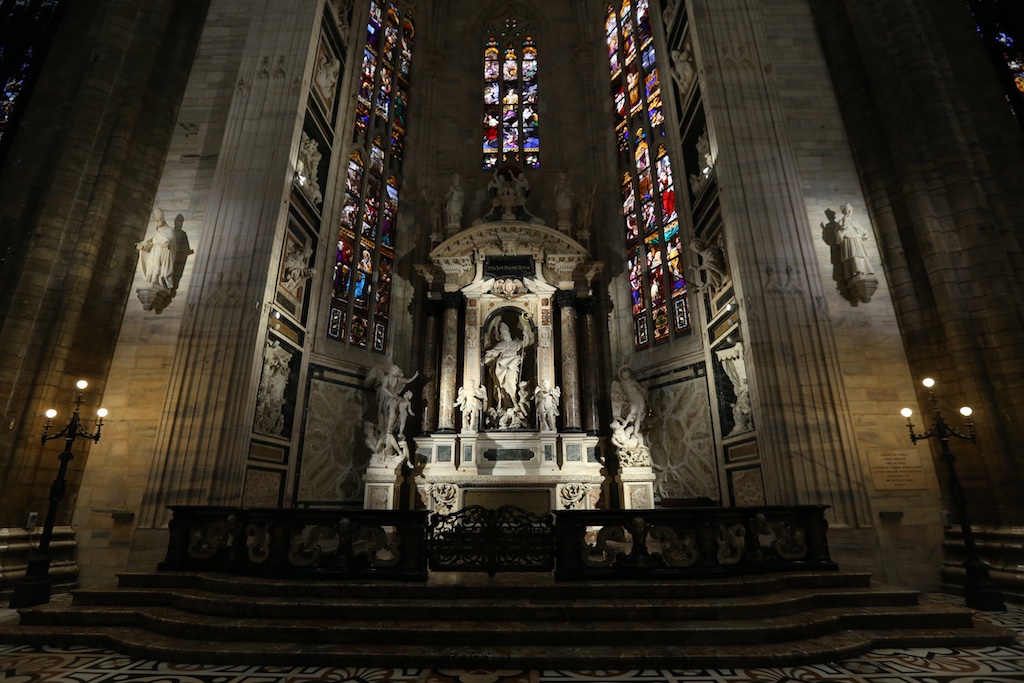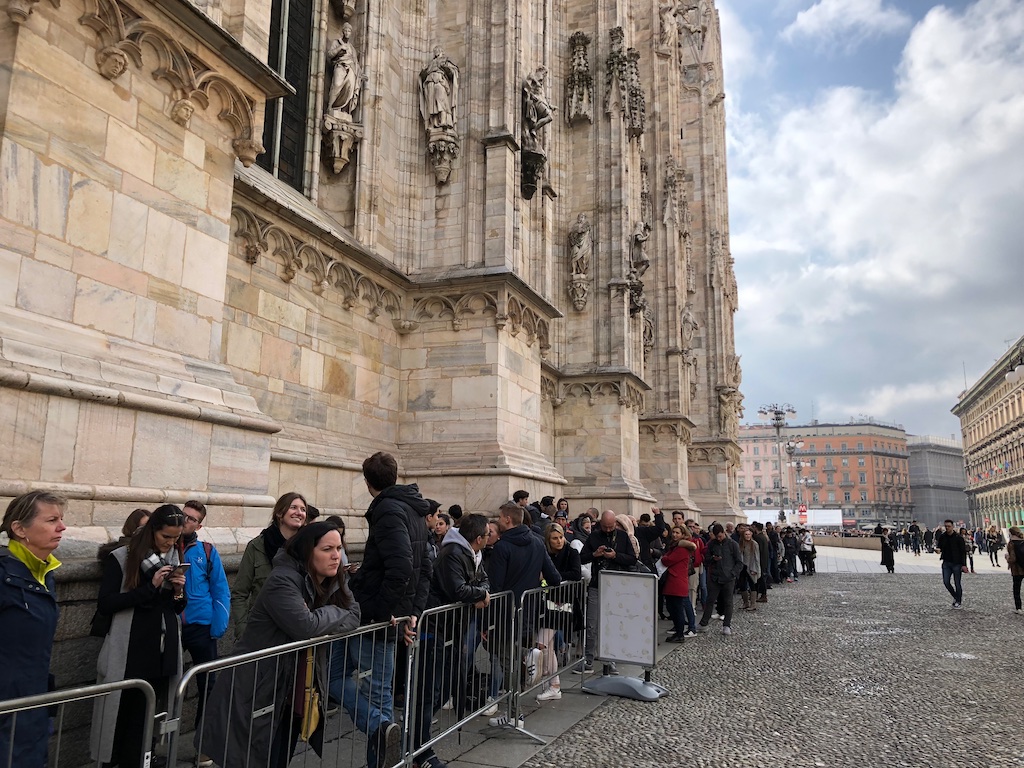The Duomo in Milan, also known as the Milan Cathedral, is one of the most iconic structures in Italy (which is saying a lot). It’s a massive cathedral that took over 600 years to complete and was only finished recently in the 1960s!
It’s absolutely a must-see when visiting Milan, Italy.
This article will walk you through the history and some fascinating facts about the Duomo and then explain what you can expect during your visit.
If you’re just concerned with purchasing tickets — then you can click right here to view tickets.
Table of Contents
The Duomo’s history
The Duomo is a fascinating work of architecture.
For one, it took nearly six centuries to complete! That sounds impressive initially but it also kinds of makes you wonder what the hold up was that required them to take 600 years to finish the project.
The Duomo was influenced by different types of architectural styles over the centuries, resulting in a massive structure dripping with different artistic influences.
I’ll walk you through the evolution of the Duomo and explain how it came to be the structure it is today.
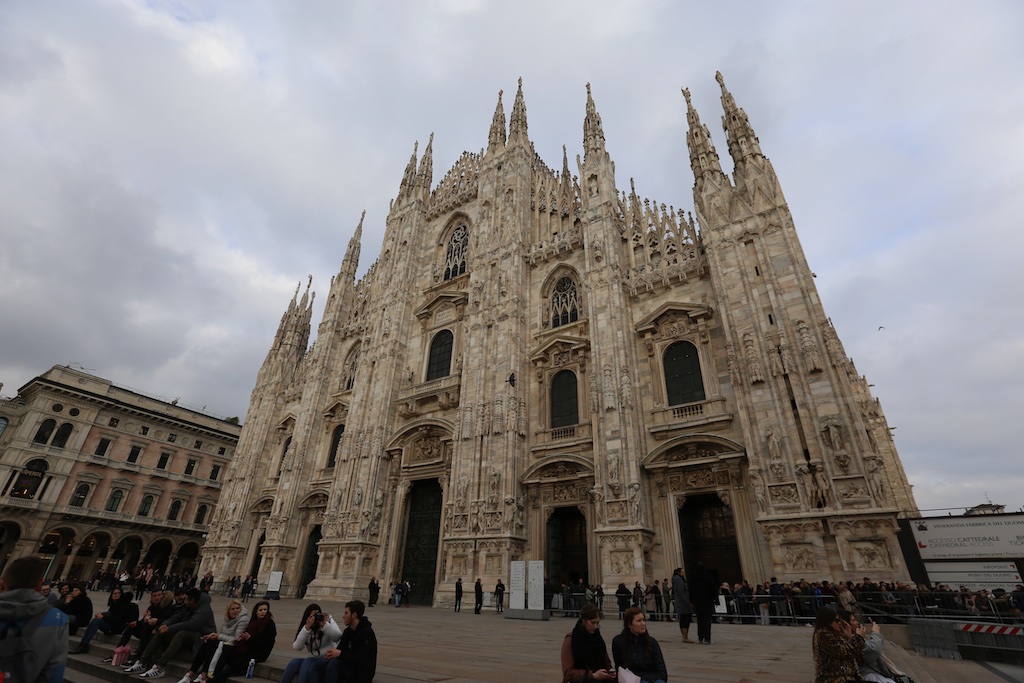
St. Thecla
Before the Duomo, there was a cathedral built on its location around 355 AD known as Santa Tecla. This was dedicated to St. Thecla, who was a saint of the early Christian Church, and a follower of Paul the Apostle.
A second basilica was later built right next to Santa Tecla, called Santa Maria Maggiore.
For almost a thousand years, these two cathedrals stood in what many people considered to be the most sacred spot in Milan.
But by the 14th century, the cathedrals had sustained significant damage from fires and from aging over the centuries.
In 1386, the Archbishop of Milan, Antonio da Saluzzo, announced that Milan would build a new cathedral to replace Santa Tecla and Santa Maria Maggiore.
The new cathedral was going to be built in part to celebrate the arrival of a new Lord of Milan, Gian Galeazzo Visconti, who was replacing the former tyrannical ruler. In 1387, construction began as the church was dedicated to Santa Maria Nascente.
The old octagonal baptistery, the Battistero Paleocristiano, dates back to 335 and still can be seen under the Milan Cathedral.
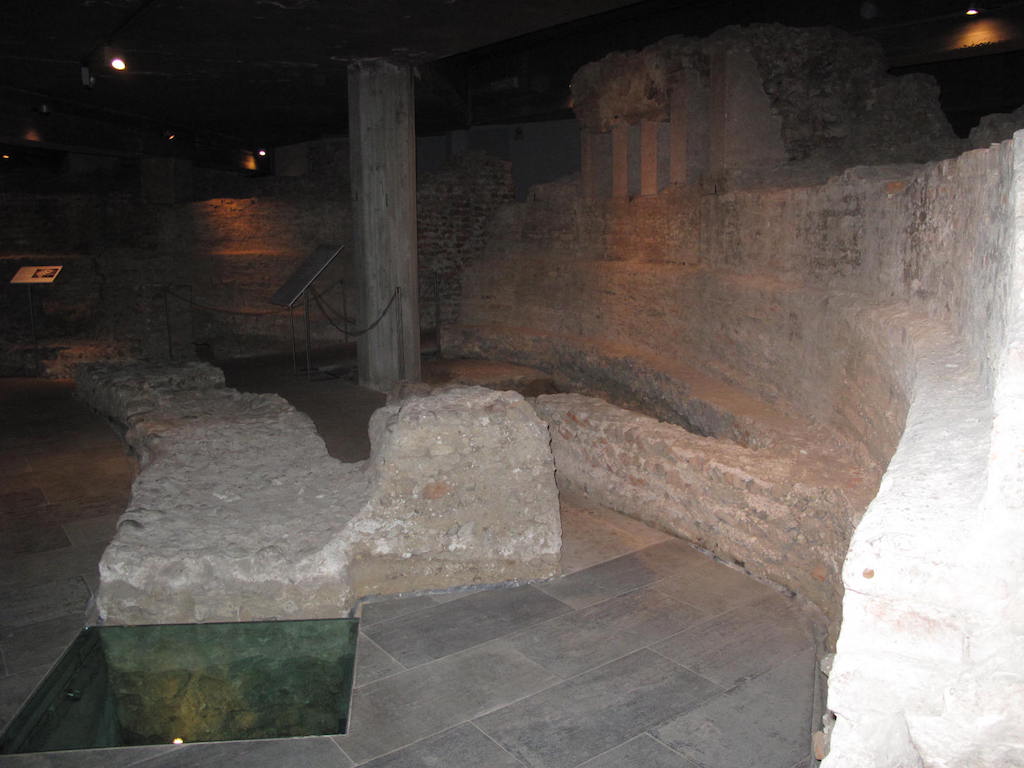
Duomo Construction Begins
The construction program was strictly regulated under the organization known as the “Fabbrica del Duomo“, which had 300 employees led by first chief engineer Simone da Orsenigo (and is still active today).
The Fabbrica del Duomo attracted many artisans, builders, and craftsmen from all across Europe, which would eventually influence the style of the building, opening it up to international influences.
Orsenigo initially planned to build the cathedral from brick in Lombard Gothic style, which was an Italian style of architecture but these plans would be subject to change.
The Lord of Milan, Visconti, wanted to follow emerging Gothic trends in European architecture.
So in 1389, a French chief engineer, Nicolas de Bonaventure, was appointed who added the Rayonnant Gothic style and decided the structure should be panelled with marble. Visconti gave the Fabbrica del Duomo exclusive use of the marble from a quarry and exempted it from taxes.
Why Gothic?
Why would they go for a Gothic approach versus an Italian or Roman approach for the Duomo?
Gothic architecture was definitely “in” in Europe and especially France, as one of the best examples of Gothic architecture, the Notre-Dame in Paris had just been finished in 1345. Milan also had a strong political connection to France versus the Roman Empire connection you might expect, so it made sense for them to “go Gothic.”
Ten years later another French architect, Jean Mignot, was called from Paris to judge the progression of the Duomo and to help innovate ways to lift stones to unprecedented height.
Mignot declared that all of the work that had been done up to that point was a “peril of ruin” that had been done “sine scienzia” (without science).
These declarations were most likely exaggerations but they still motivated Galeazzo’s engineers to improve their instruments and techniques. By the time of the death of Gian Galeazzo in 1402, almost half the cathedral was complete.
However, construction stalled almost entirely until 1480 due to a lack of funds and ingenuity.
In 1500 to 1510, the octagonal cupola was completed, along with four series of 15 statues each, portraying saints, prophets, sibyls and other Biblical figures.
The exterior still had a long way to go though and only had the Guglietto dell’Amadeo (“Amadeo’s Little Spire”), which was constructed 1507-1510 and was actually a Renaissance masterwork.
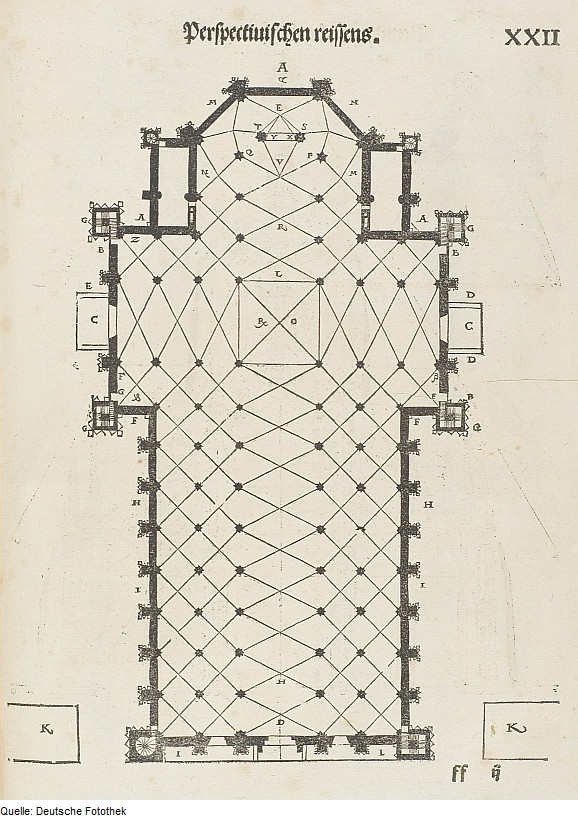
An (almost) Roman twist
In 1571, Pellegrino Pellegrini was appointed as chief engineer.
Borromeo and Pellegrini decided they wanted to take the Duomo into a different direction more in line with the Renaissance. The wanted to subdue the Gothic style and emphasize its Roman and Italian roots.
So Pellegrini attempted to design a Roman style façade, with columns, obelisks and a large tympanum but his designs were never carried out.
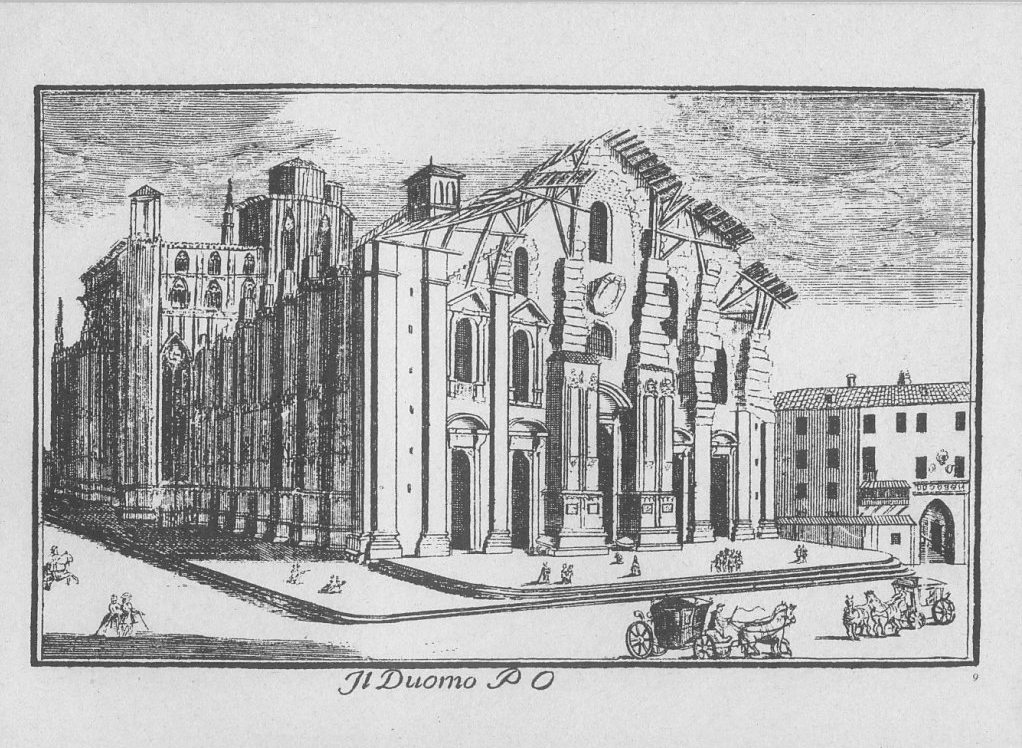
In 1762 one of the main features of the cathedral, the Madonnina’s spire, was erected standing at the height of height of 349 feet.
Interesting fact: Via tradition, Madonnina’s spire must always be the highest point in Milan. So as new skyscrapers have been constructed that have surpassed the height of the Duomo, replicas of la Madonnina have been placed atop of those buildings.
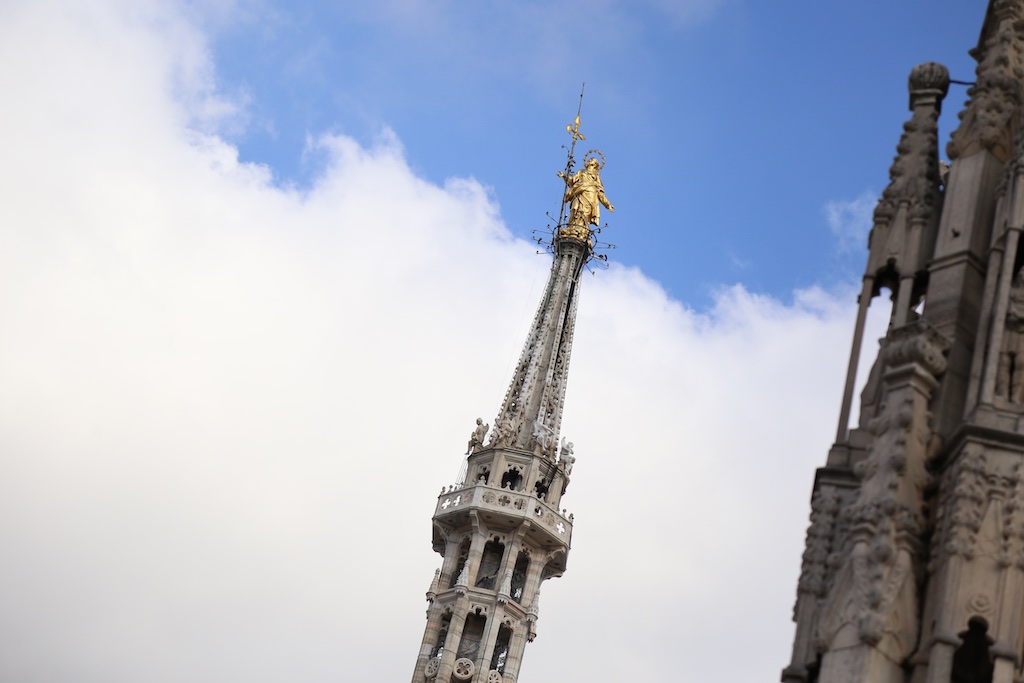
The façade completed
On May 20, 1805, Napoleon Bonaparte, soon to be crowned King of Italy, ordered the façade to be finished by Pellicani and within only seven years, the Cathedral’s façade was finally completed.
Pellicani, added some neo-Gothic details to the upper windows and as a token of his appreciation he added a statue of Napoleon at the top of one of the spires. Interestingly, Napoleon was crowned King of Italy at the Duomo.
The statues on the southern wall were also finished, while in 1829-1858, new stained glass windows replaced the old ones.
The last details of the cathedral were finished only in the 20th century as the last gate was inaugurated on January 6, 1965. This date is considered the very end of the building process although some statues still have not been finished.
Recent renovations
The Duomo’s main façade went under renovation from 2003 to early 2009 when it was uncovered in February.
In November 2012 a campaign was launched to raise funds for the cathedral’s preservation by asking patrons to “adopt” spires.
Donors who contribute €100,000 or more will have a plaque with their name engraved on it placed on the spire.
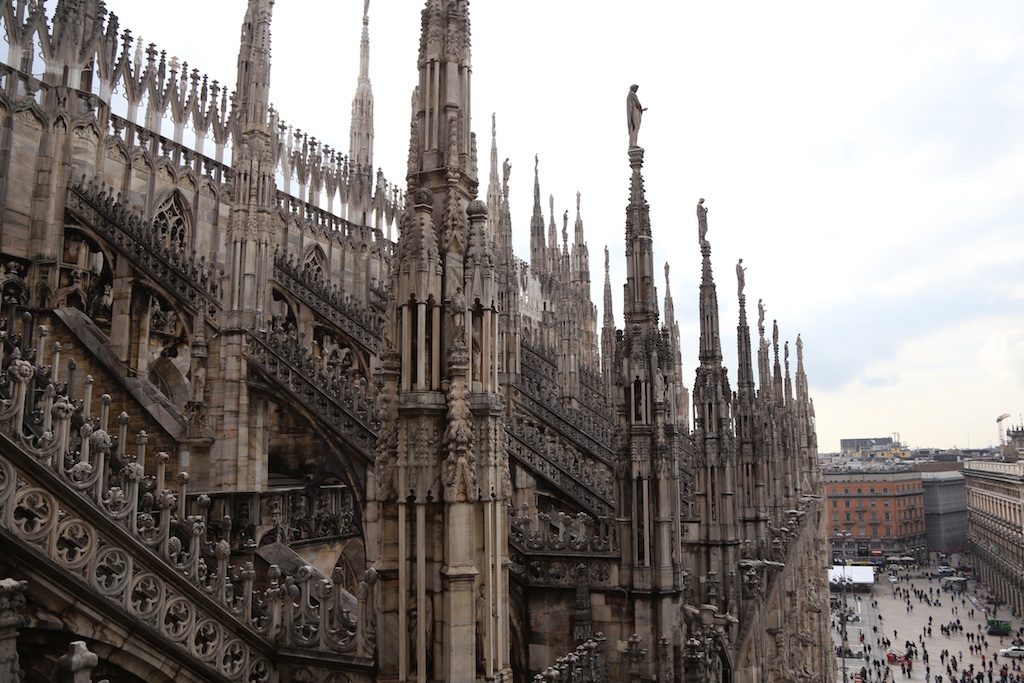
Reception
Since the Duomo is a product of centuries of construction and influences from several different regions and time periods, you might be wondering how it’s been received by critics.
Well, here’s a couple of reviews from some names you might recall.
Mark Twain visited Milan in the summer of 1867 and described the Duomo as follows:
What a wonder it is! So grand, so solemn, so vast! And yet so delicate, so airy, so graceful! A very world of solid weight, and yet it seems …a delusion of frostwork that might vanish with a breath!… The central one of its five great doors is bordered with a bas-relief of birds and fruits and beasts and insects, which have been so ingeniously carved out of the marble that they seem like living creatures– and the figures are so numerous and the design so complex, that one might study it a week without exhausting its interest…everywhere that a niche or a perch can be found about the enormous building, from summit to base, there is a marble statue, and every statue is a study in itself…Away above, on the lofty roof, rank on rank of carved and fretted spires spring high in the air, and through their rich tracery one sees the sky beyond. … (Up on) the roof…springing from its broad marble flagstones, were the long files of spires, looking very tall close at hand, but diminishing in the distance…We could see, now, that the statue on the top of each was the size of a large man, though they all looked like dolls from the street… They say that the Cathedral of Milan is second only to St. Peter’s at Rome. I cannot understand how it can be second to anything made by human hands.
But not every famous author had nice things to say about the Duomo. Oscar Wilde visited Milan in June 1875. In a letter to his mother he wrote:
The Cathedral is an awful failure. Outside the design is monstrous and inartistic. The over-elaborated details stuck high up where no one can see them; everything is vile in it; it is, however, imposing and gigantic as a failure, through its great size and elaborate execution.
So opinions are a little mixed about the Duomo but I personally think it’s a great work of art.
Where is the Duomo?
The Duomo is located in the heart of Milan, Italy. It stands overlooking the Piazza del Duomo, which is the main city square of Milan and major hub for all sorts of activity.
It’s right next to the famous Galleria Vittorio Emanuele II, which some say is the oldest shopping mall.
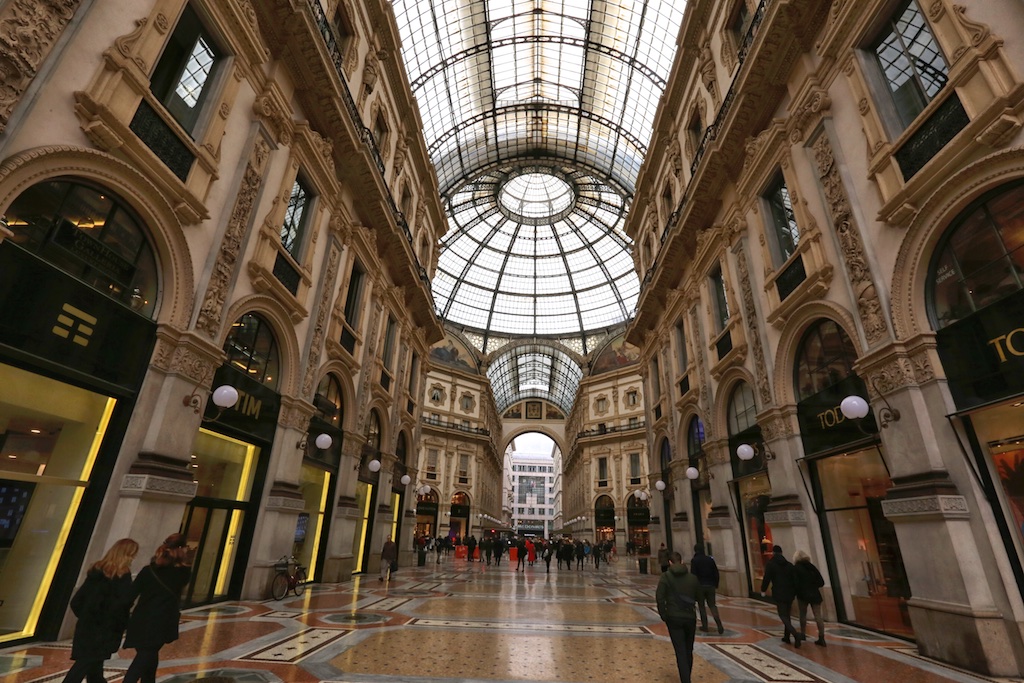
Note: Don’t get this Duomo confused with the Cathedral of Santa Maria del Fiore in Florence, Italy.
The Duomo statues
It’s said that the Duomo has over 3,400 statues which is just incredible when you think about all of the time and effort that probably went into crafting and assembling all of those statues.
Some of them are incredibly intricate, so I can only imagine the time needed to complete all of them.

I’m not sure if it’s true, but some have stated that the Duomo has more statues than any other in the world.
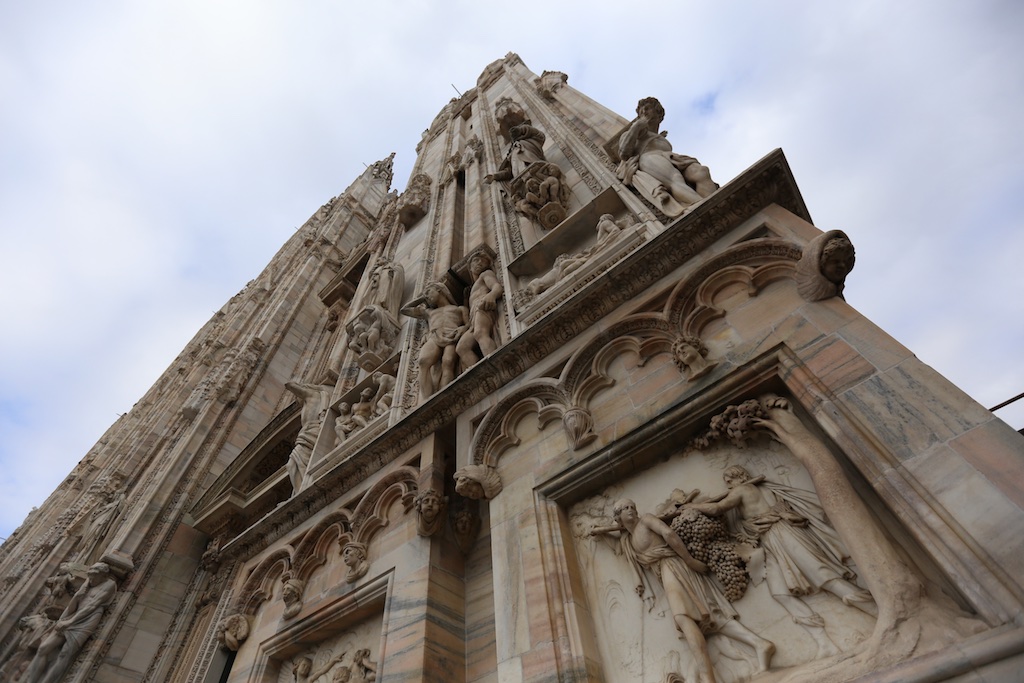
Many of the statues were moved to the Duomo Museum, which you can get access to with Duomo tickets.
The Duomo rooftop
One of the best ways to admire all of the art on this structure is to make your way up to the rooftop.
The first level will take you along the outside perimeter of the Duomo where you can take in the views behind some caged wire.
The passage ways are pretty short and and narrow so if you’re tall be on the lookout.
From here, you’ll be able to get up close to many of the statues and witness the incredible detail.
Then you’ll go up another set of stairs (if you want) to the top of the roof.
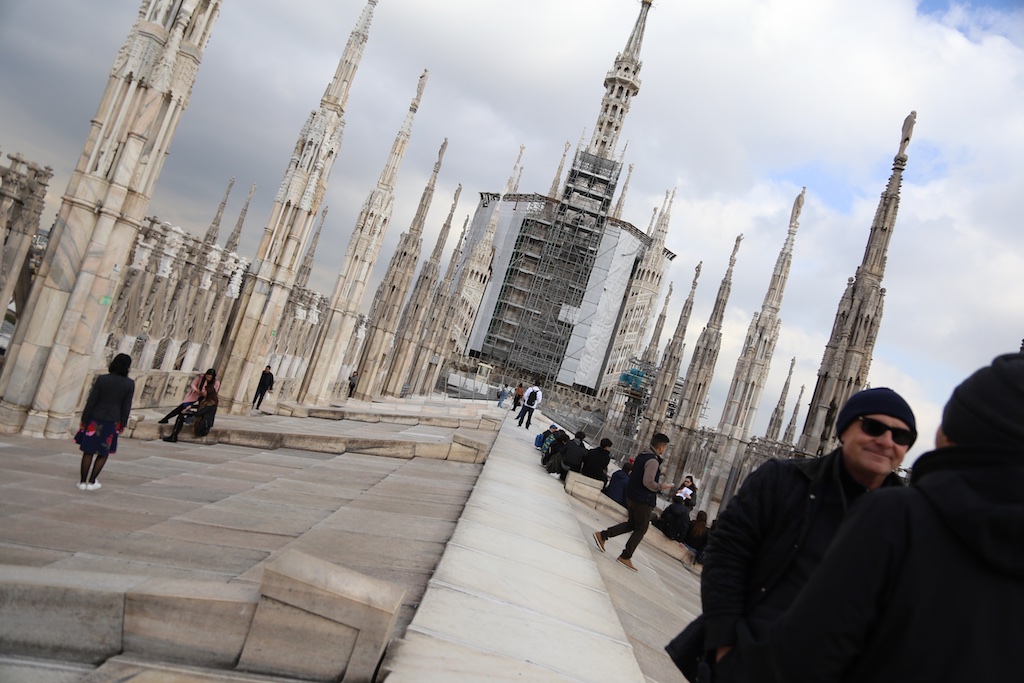
You’ll get sweeping views of the plaza and surrounding city.
You can also get clear shots of the Milan skyline and some of its iconic building like the Unicredit Tower
How to access the Duomo rooftop
You can access the rooftop via stairs or an elevator.
If you think you’ll need the elevator, make sure you check ahead of time to verify that it’s running. When we visited, the elevator was not running so we had to take the stairs up and down.
How bad are the stairs?
I don’t the stairs are that bad but unless you’re a fitness fanatic, you’ll likely be a little winded by the time you make it up to the first rooftop.
The staircase is tad confining but I didn’t think it was nearly as bad as the Notre Dame stairs.
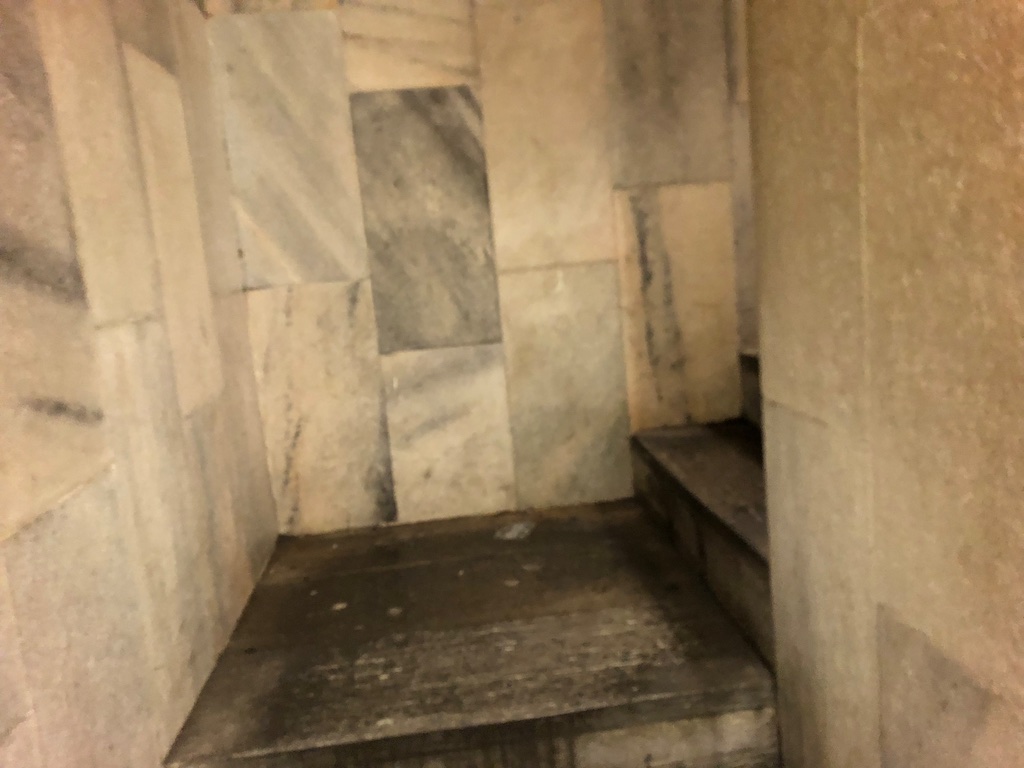
The second flight of stairs up to the true rooftop is much shorter so it’s not too difficult to make it up there. The main issue is other tourists, since passing people can be a little tight.
All things considered though, the 250 stairs aren’t a nightmare like some would make them out to be.
The Duomo Interior
The interior of the Duomo is simply stunning when you first lay your eyes on it.
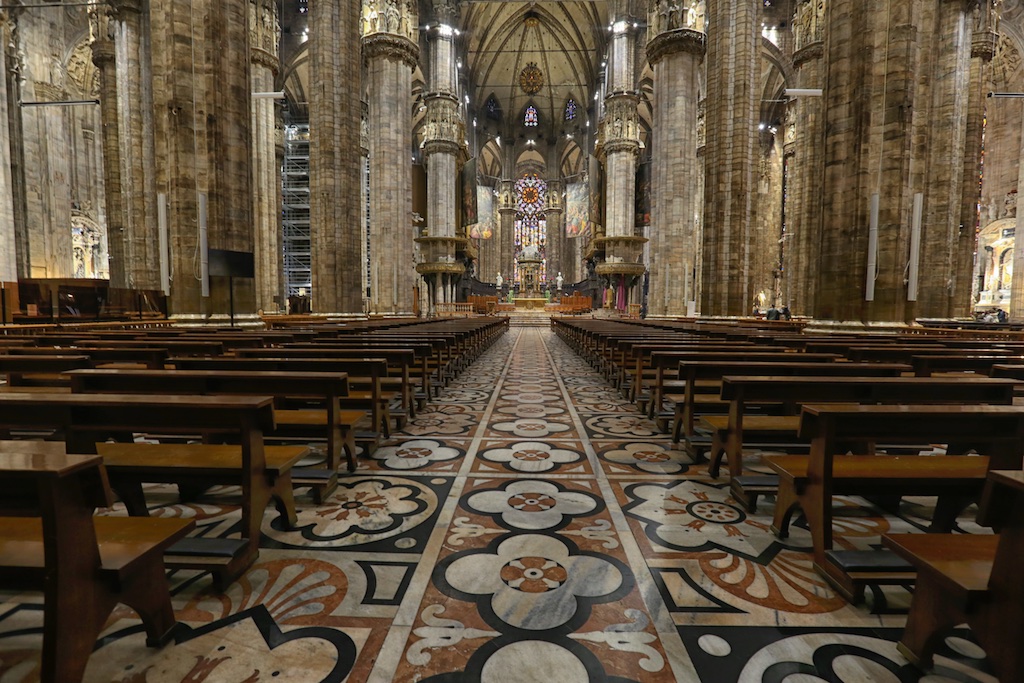
It’s made up of five naves, with a central nave and two lateral naves on each side. There are 40 columns towering 80 feet inside and the height of the nave is about 147 feet, making it the highest Gothic vaults of a complete church.
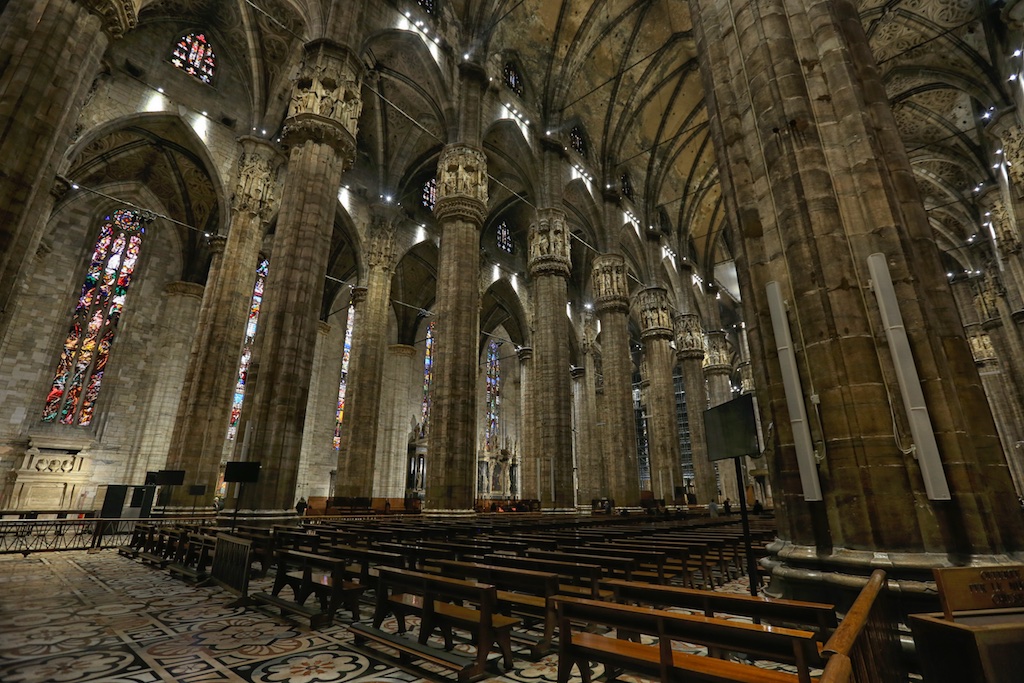
I’m not a huge “cathedral guy” but I was absolutely blown away by the Duomo’s interior when I visited.
Once thing I will say that caught me off guard was how cold it was inside, so bring some layers if you’re visiting during a cold time of year.
The interior has a number of things you’ll want to check out. Here are some of those sites (via Wikipedia).
Saint Bartholomew Flayed
At the left of the altar is located the most famous statue of all the Cathedral, the Saint Bartholomew Flayed (1562), by Marco d’Agrate
Red light bulb
- A small red light bulb in the dome above the apse marks the spot where one of the nails reputedly from the Crucifixion of Christ has been placed. The Holy Nail is retrieved and exposed to the public every year, during a celebration known as the Rite of the Nivola.
Sarcophagi
- The Archbishop Alberto da Intimiano’s sarcophagus
- The sarcophagi of the archbishops Ottone Visconti and Giovanni Visconti, 14th century.
- The sarcophagus of Marco Carelli, who donated 35,000 ducati to the construction of the cathedral.
Altars
- The three magnificent altars by Pellegrino Pellegrini, which include the notable Federico Zuccari’s Visit of St. Peter to St. Agatha jailed.
Other sites to check out
- Monument to Gian Giacomo Medici di Marignano, called “Medeghino”, by Leone Leoni
- The transepts house the Trivulzio Candelabrum, which is in two pieces. The base (attributed to Nicolas of Verdun, 12th century), characterized by a fantastic ensemble of vines, vegetables and imaginary animals; and the stem, of the mid-16th century.
- In the left aisle, the Arcimboldi monument by Alessi and Romanesque figures depicting the Apostles in red marble and the neo-Classic baptistry by Pellegrini.
- In November–December, in the days surrounding the birthdate of Saint Charles Borromeo, a series of large canvases, the Quadroni are exhibited along the nave.
- The 5-manual, 225-rank pipe-organ, built jointly by the Tamburini and Mascioni Italian organ building firms on Mussolini’s command, is currently the largest organ in all of Italy.
Duomo Milan Tickets
My biggest piece of advice for visiting the Duomo is to buy the skip the line tickets. We visited in early March and I thought the lines would be minimal since we weren’t there during the summer.
But that was NOT the case….
The lines were super long and everybody in line looked exhausted. And when they saw we were able to skip the line, you could sense their frustration brewing.
Luckily, we had purchased the skip the line tickets and getting into the Duomo was a breeze for us. I almost felt guilty it was so easy for us to get in.
Milan Duomo hours
- The Cathedral is open daily from 8:00 am to 7:00 pm
- The Rooftop is open daily from 9:00 am to 7:00 pm (Last ticket: at 6.00 pm. Last admission: at 6.10 pm).
If you want to beat the crowds, I advise that you arrive close to opening, though you might just want to get skip the line tickets to avoid waiting.
Tickets for The Duomo di Milano, Rooftop & Museum
I highly suggest that you get tickets for the rooftop because you get some amazing views of the city of Milan. But more importantly, I think that’s how you can best appreciate the masterpieces of the Duomo up close.
If you never leave the ground, you’ll be missing out on a ton!
You can purchase tickets only for the cathedral visit for €3,00 to €2,00 but again you’ll have to contend with the lines.
Tickets for the Last Supper
Hop-on Hop-off Bus Milan
Hotels near the Duomo Milan
During my stay in Milan, we stayed at the Park Hyatt Milan.
This was a fantastic stay and I would highly recommend it as a luxury property but it’s very expensive.
Final word
The Duomo in Milan is absolutely a must-see.
As someone who is definitely not obsessed with cathedrals and can do without them, I was very happy that I decided to check out the Duomo. It’s just mind-blowing huge and the level of the detail found throughout the structure is insane.
Daniel Gillaspia is the Founder of UponArriving.com and the credit card app, WalletFlo. He is a former attorney turned travel expert covering destinations along with TSA, airline, and hotel policies. Since 2014, his content has been featured in publications such as National Geographic, Smithsonian Magazine, and CNBC. Read my bio.

